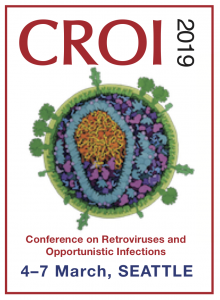Isoniazid preventative therapy in HIV positive pregnant women not linked to poor outcomes
28 March 2019. Related: Conference reports, TB coinfection, CROI 26 (Retrovirus) 2019.
 Polly Clayden, HIV i-Base
Polly Clayden, HIV i-Base
Isoniazid preventative therapy (IPT) during pregnancy was not associated with a higher rate of adverse maternal or infant outcomes compared to not starting IPT in pregnancy. These findings from the Tshepiso study from South Africa were presented at CROI 2019. [1]
Pregnancy and HIV both increase the risk of TB disease and, in turn, poor maternal and infant outcomes. IMPAACT P1078/TB Apprise, presented at CROI 2018, found that starting IPT in HIV positive pregnant women increased risk of such outcomes compared with starting after delivery – raising questions on the safety of IPT in this population. [2]
Tshepiso was a prospective observational study looking at maternal and infant outcomes among HIV positive women with and without active TB disease conducted in 2014 in Soweto, South Africa from January 2011 through July 2014. Women were enrolled in pregnancy and followed for a year after delivery.
Nicola Salazar-Austin from John Hopkins University School of Medicinepresented data on behalf of the study investigators.
The study enrolled 155 HIV positive women without TB disease. The analysis includes 151 women with known pregnancy outcomes; 69 (46%) started IPT during pregnancy.
At enrollment women were a median of 29 years and had CD4 count of approximately 370 cells/mm3across both groups. Women in the IPT group were enrolled at a median of 28 weeks’ gestation vs 32 weeks in the no IPT group, p=0.01.
At delivery, 66% and 78% of women were receiving ART (84% EFV-based) in the IPT and no IPT groups respectively. The remainder received AZT monotherapy with or without single dose nevirapine (in accordance with guidelines at the time the study was conducted), or no ART.
Of the 69 women starting IPT during pregnancy, the majority started in the second (48%) or third (49%) trimester. The median duration of IPT was 3 months.
Median gestational age at delivery was 39 weeks in both groups.
There was one case of maternal TB in the no IPT group and no infant TB cases.
Respective rates of preterm deliveries, fetal demise (spontaneous abortion and still birth), low birth weight and congenital anomalies in the IPT vs no IPT groups were: 10% vs 22%; 1% vs 1%; 9% vs 12%; and 2% vs 2%.
A composite of the four outcomes showed more adverse outcomes in the no IPT group: 15% vs 27%; p=0.09.
IPT in pregnancy was not associated with a higher rate of poor maternal or infant outcomes in this cohort after controlling for CD4, viral load, ART maternal age, BMI and anaemia. aOR for adverse outcome with no IPT in pregnancy: 2.79 (95% CI: 1.13 to 7.39).
The investigators noted that although this study had well-characterised exposures and outcomes, this was a secondary analysis with a small sample size. As well as this, IPT use was not randomised so the study could not rule out unmeasured confounders and control for all relevant factors.
But these results might provide some reassurance that IPT can be used safely in the second and third trimesters of pregnancy in HIV positive women in high burden settings.
More research is needed to look at the safety of alternative TB preventative therapy, such as 3HP and 1HP, for HIV positive pregnant women in high burden settings, given their high risk of TB disease and poor maternal and infant outcomes.
References
- Salazar-Austin N et al. IPT and pregnancy outcomes in HIV-positive women: the Tshepiso cohort. CROI 2019. Seattle. 4–7 March 2019. Oral abstract 77.
http://www.croiconference.org/sessions/ipt-and-pregnancy-outcomes-hiv-positive-women-tshepiso-cohort (abstract)
http://www.croiwebcasts.org/p/2019croi/77 (webcast) - Clayden P. Isoniazid preventive TB therapy in pregnancy and postpartum: recommendations now need to be re-evaluated. HTB 16 April 2018.
https://i-base.info/htb/33851

